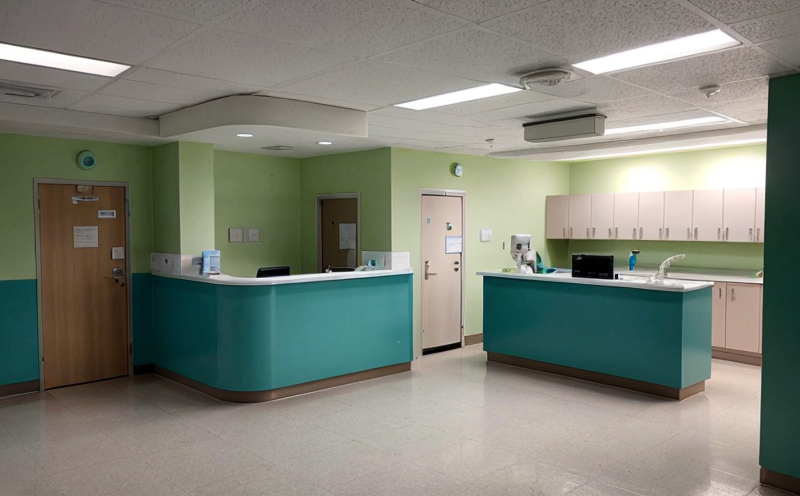WHO Environmental Monitoring of Hospital Sterile Areas
The World Health Organization (WHO) has established stringent guidelines to ensure the safety and cleanliness of hospital environments, particularly in sterile areas. These areas include operating rooms, intensive care units, delivery rooms, and other locations where patient recovery is critical.
Environmental monitoring for these spaces focuses on detecting potential pathogens that could pose a risk to patients' health. The primary aim is to maintain an environment free of harmful microorganisms such as bacteria, fungi, and viruses that can compromise the immune system of patients who are already vulnerable due to their medical condition or recent surgeries.
Our service adheres strictly to WHO guidelines and international standards like ISO 14698-2:2013 for cleanroom classification. This ensures that our methods meet the highest quality assurance benchmarks, providing you with reliable data about your sterile areas' microbiological safety levels.
The process involves several key steps:
- Sampling: We collect samples using specialized swabs and air sampling devices from various points within the designated sterile area. Sampling sites are strategically chosen based on WHO recommendations to ensure comprehensive coverage.
- Analysis: Samples undergo detailed analysis in our state-of-the-art laboratories, equipped with advanced microbiological techniques such as quantitative PCR (qPCR) and culture-based methods for detecting microorganisms.
- Reporting: Upon completion of testing, we provide you with a comprehensive report that includes results from each sampling point along with an overall assessment of the sterile area's compliance with WHO standards. Recommendations are also included to help improve any non-compliant areas identified during our monitoring process.
By implementing this service, hospitals can ensure they meet regulatory requirements and enhance patient safety by minimizing risks associated with nosocomial infections (infections acquired in healthcare settings). Regular environmental monitoring helps identify potential issues early on so corrective actions can be taken promptly before they escalate into serious health concerns.
In addition to meeting regulatory obligations, our service offers valuable insights that contribute significantly towards maintaining high standards of hygiene and cleanliness within your hospital. This is crucial not only for the well-being of patients but also for protecting healthcare workers from exposure to harmful pathogens.
Our team of experts works closely with you throughout the entire process to ensure smooth implementation and interpretation of results. Whether it's initial setup, ongoing monitoring programs, or detailed reports after each round of testing, we are committed to providing personalized support tailored specifically for your facility’s needs.
Eurolab Advantages
At Eurolab, we pride ourselves on offering unparalleled expertise and comprehensive services in biological & microbiological testing. With a team of highly qualified professionals specializing in hospital and healthcare environmental microbiology, you can trust us to deliver accurate and reliable results.
- World-Class Facilities: Our laboratories are equipped with the latest technology and instrumentation necessary for precise microbial analysis. From high-speed centrifuges to automated colony counters, every tool is designed to enhance our analytical capabilities.
- Comprehensive Services: Beyond just monitoring sterile areas, we offer a wide range of services including air quality assessments, surface contamination studies, and antimicrobial efficacy testing. This holistic approach allows us to provide a more comprehensive understanding of your facility’s cleanliness levels.
- Regulatory Compliance: All our procedures are meticulously designed to comply with international standards such as WHO guidelines, ISO 14698-2:2013 for cleanroom classification, and others. This ensures that you receive reports which are fully compliant with regulatory bodies.
- Personalized Support: Our dedicated customer service team is always available to assist you at every stage of the project—from consultation through report interpretation. We believe in building long-term relationships based on mutual trust and satisfaction.
Customer Impact and Satisfaction
Our customers have consistently praised our commitment to excellence, citing several benefits that directly impact their operations:
- Enhanced Patient Safety: By ensuring strict adherence to WHO standards in our environmental monitoring services, we contribute significantly towards reducing the risk of nosocomial infections. This not only protects patients but also enhances overall trust between healthcare providers and their clientele.
- Improved Compliance: Regular environmental monitoring helps facilities stay ahead of regulatory changes by providing up-to-date information regarding potential risks within sterile areas. This proactive approach ensures compliance with current best practices.
- Cost Efficiency: Early detection of issues through our monitoring services allows for timely interventions, thereby avoiding costly clean-ups or closures required when problems are left unaddressed until later stages.
- Increased Reputation: Demonstrating commitment to high standards in hygiene and cleanliness can greatly improve your hospital’s reputation among both patients and healthcare professionals alike. This positive image fosters greater trust and loyalty within the community.
Environmental and Sustainability Contributions
In addition to its direct benefits for patient care, our environmental monitoring service plays an important role in promoting sustainable practices. By identifying areas where improvements can be made regarding cleanliness and hygiene, we help reduce waste generation associated with unnecessary cleanings or treatments.
- Resource Optimization: Through efficient sampling techniques and advanced analytical methods, we minimize the use of resources such as solvents and reagents without compromising on accuracy. This contributes positively towards reducing our ecological footprint.
- Educational Value: Our findings provide valuable educational material for staff training programs aimed at enhancing their awareness regarding proper hygiene practices within healthcare settings. Educating employees about these matters leads to better adherence to protocols, ultimately contributing to more sustainable working environments.





